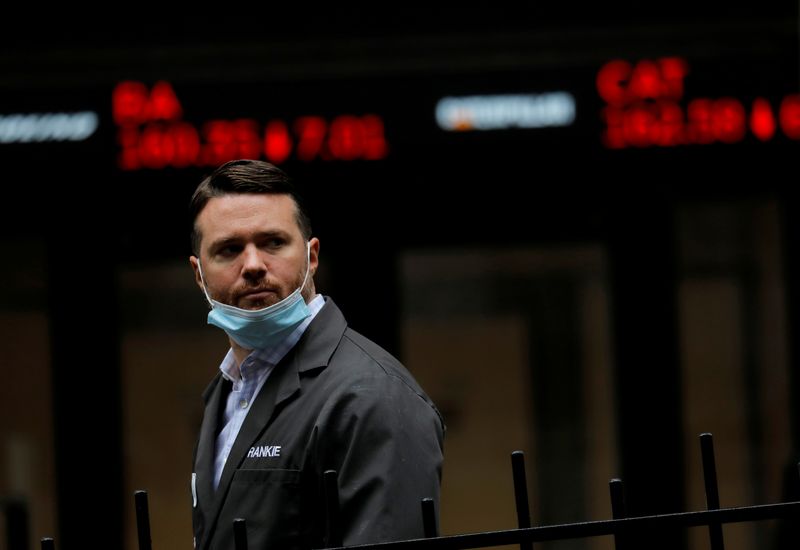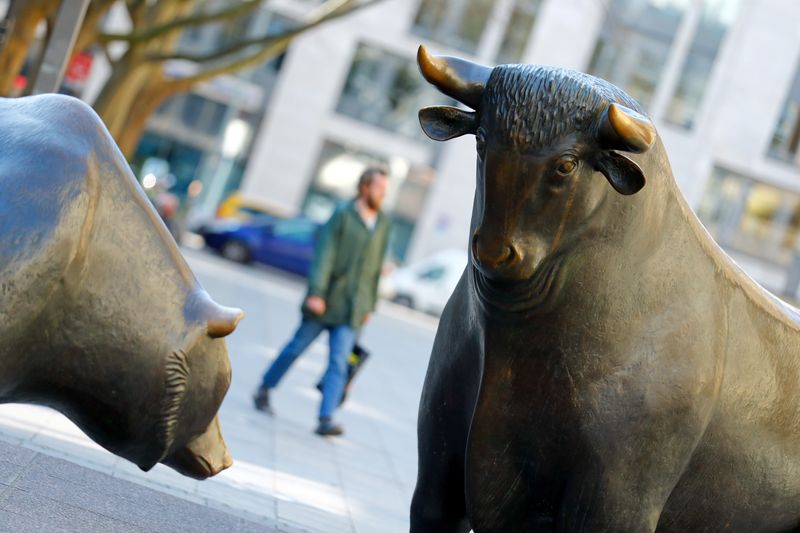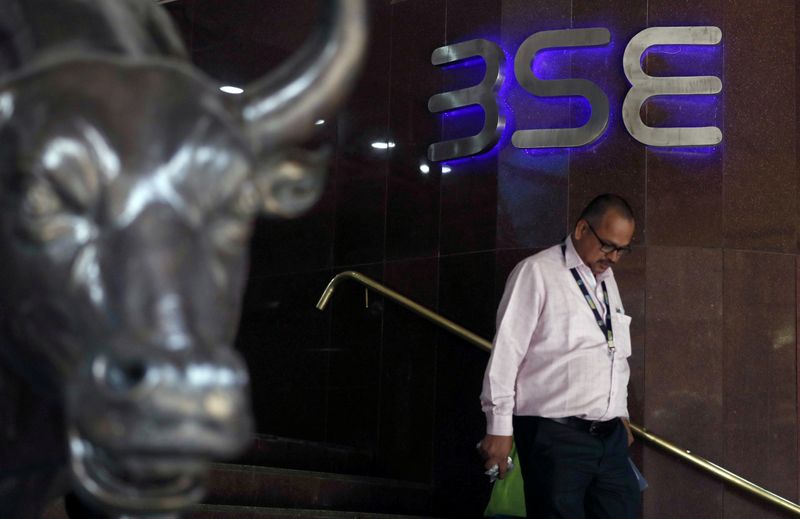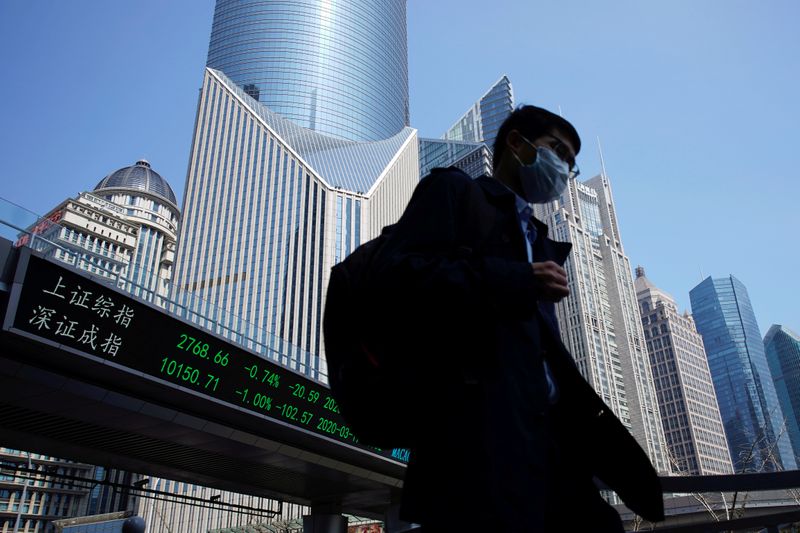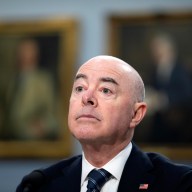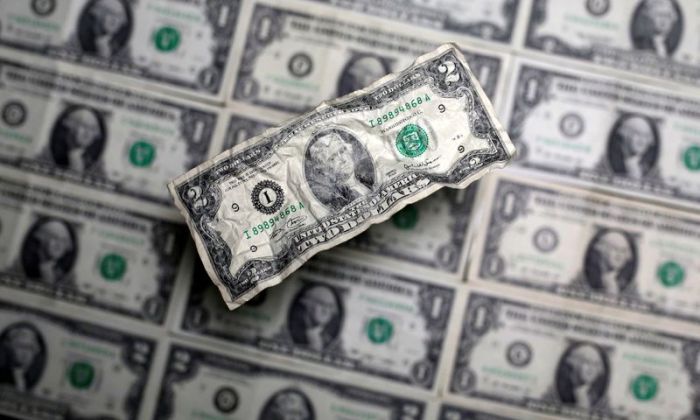LONDON (Reuters) – Last December, the first infection with the new coronavirus was reported to the World Health Organization. Twelve months later, as the charts below show, global financial markets have been on a roller coaster like no other.
JANUARY JITTERS
The coronavirus wasn’t even the first thing that spooked the markets this year. The tone was set when an escalation of an oil market turf war between Saudi Arabia and Russia sent oil prices crashing more than 5% on Jan 8.
Just days later, though, China’s stock markets began to fall as a cluster of more than 50 pneumonia cases in Wuhan city sparked a warning from the WHO that there could be a new SARS-like virus.
Oil continued to fall as traders began worrying about a drop in Chinese demand, but other major markets were not seriously affected until mid-February, when it became clear the virus was rapidly spreading out of Asia.
Cue carnage. From Feb. 20 to March 24, as Europe’s big economies locked down, MSCI’s 49-country world share index lost more than a third of its value, haemorrhaging a staggering $18 trillion.
(Graphic: Trillion dollar carnage – https://fingfx.thomsonreuters.com/gfx/mkt/gjnpwkjqqpw/Pasted%20image%201608259599744.png)
Wall Street’s S&P 500, Dow Jones and Nasdaq slumped 35%, 38% and 30% respectively. London and Frankfurt’s internationally exposed FTSE and DAX markets dropped 35% and 40%. Japan’s Nikkei fell 30%. Chinese stocks saw a more modest 16% drop.
“In retrospect, I felt I was one of the villagers in the boy who cried wolf story,” said Ben Inker, head of asset allocation at investment firm GMO.
“We had seen a number of potential pandemics never really develop … we were assuming that this was going to be contained, and when it didn’t we understood why the world was freaking out.”
For reference, the record quarterly drop for Wall Street was 40% in 1932, the onset of the Great Depression. The fact that the S&P and Dow were at record highs in mid-February made the crash this time seem more brutal.
(Graphic: Speed, severity of coronavirus selloff eclipses previous market dislocations – https://fingfx.thomsonreuters.com/gfx/mkt/dgkvlqjmzpb/Pasted%20image%201608261872632.png)
MARCH MADNESS
Governments were already trying to shore up their economies, but just as in the financial crisis a decade previously, it took powerful central bank medicine to steady the markets.
The Federal Reserve’s move to cut U.S. interest rates to zero in mid-March initially had zero impact, but once it opened new swap lines to keep money markets flush with dollars and the European Central Bank and other big central banks arrived with their own measures, the rout eased.
The amount of money and effort thrown at the problem has been unprecedented.
Bank of America calculates that central banks have spent $1.3 billion an hour buying assets since March and made 190 interest rate cuts this year, which works out to four every five trading days. Global debt is approximately 400% of world gross domestic product, compared with around 280% after the financial crisis in 2009.
As well as fuelling the monster market rebound, JPMorgan estimates the central bank moves have left nearly $35 trillion, or 83%, of all richer, developed nations’ government debt with a negative yield once inflation is factored in.
It means investors are effectively paying for the privilege of lending to those countries. Germany’s finance ministry, for example, says it has earned more than 7 billion euros ($8.51 billion) from issuing new bonds this year.
(Graphic: G4 policy rates nearly sub-zero – https://fingfx.thomsonreuters.com/gfx/mkt/jbyvrbxjlve/Pasted%20image%201608263862737.png)
(Graphic: Central bank balance sheets swell – https://fingfx.thomsonreuters.com/gfx/mkt/rlgvdarebpo/Pasted%20image%201607093853415.png)
RECORD PLUNGE
Locking down much of the world economy has not been easy.
By April the International Monetary Fund was forecasting global growth would to fall to minus 3 percent, a 6.3 percentage point downgrade from its January estimate. Its latest forecast is for minus 4.4% for the year. “This makes the Great Lockdown the worst recession since the Great Depression, and far worse than the Global Financial Crisis,” it has said.
Unemployment and global debt levels have also surged, and the World Bank warns global extreme poverty is set to rise for the first time in over 20 years.
It could push an additional 88 million to 115 million people below the breadline this year and as many as 150 million by the end of next year.
(Graphic: Global GDP growth – https://fingfx.thomsonreuters.com/gfx/mkt/bdwpkqdkopm/Pasted%20image%201607534722013.png)
(Graphic: World annual unemployment soars in 2020 – https://fingfx.thomsonreuters.com/gfx/mkt/xegvbblyovq/Pasted%20image%201608269955595.png)
APRIL FALLS
Stock markets were beginning to recover in April, but the shocks did not stop. Oil went negative for the first time ever, dropping as low as minus $40 a barrel, as oil producers began to fear storage capacity could run out.
It did not last long, though. By the end of April it was back up to almost $20 a barrel and is now back above $50 – a 220% gain for anyone brave enough to dive in – although it is still down nearly 25% for the year as a whole.
(Graphic: The 2020 oil price crash – https://fingfx.thomsonreuters.com/gfx/mkt/rlgvdqjrnpo/Pasted%20image%201608254398864.png)
WINNERS AND LOSERS
A breakdown of the best- and worst-performing stocks also tells the story of the pandemic, which has now claimed nearly 2 million lives.
Malaysian rubber glove maker Supermax and Korean pharmaceutical firm Shin Poong have rocketed roughly 780% and 1,600% respectively.
The boom in working from home and video chat has lifted Zoom 420%. Moderna, one of the drug firms delivering a vaccine, is up over 470%, sit-on-your-sofa stocks like Netflix and Amazon have jumped 62% and 77% respectively.
(Graphic: Electric (vehicle) dreams – https://fingfx.thomsonreuters.com/gfx/mkt/yxmpjqjjjvr/Pasted%20image%201608312246439.png)
The other big trend of the year – electric cars – has seen Tesla surge 730% and its rival Nio charge up over 1,000%.
At the other end, cruise ship company Carnival has lost 57%, scores of airlines, travel firms and retailers have been battered, and aircraft-engine maker Rolls Royce has been pummelled over 50% for the year.
(Graphic: Global stock market scorecard 2020 – https://fingfx.thomsonreuters.com/gfx/mkt/xklvyjmqdpg/Pasted%20image%201608303185750.png)
EMERGING HOPE
Major currencies have also seesawed. The safe-haven dollar surged up until the mid-March turnaround but is now down 7% for the year and 6% since late September, whereas the euro and yen are up roughly 10% and 5%.
Sweden’s crown is the top 2020 performer with a near 13% jump. A 6.5% surge for China’s yuan will be one of its best year’s, too. But there is still plenty of pain in emerging markets.
Brazil’s real is down 22%. Russia’s rouble – one of last year’s top performers – is down 17% despite a bounce and near bullet-proof balance sheet. Turkey’s lira has climbed off record lows but is still down 19%. Mexico’s peso and South Africa’s rand are both down 4% to 5%, although they were down 14% and 20% respectively at the end of September.
(Graphic: Global FX moves in 2020 – https://fingfx.thomsonreuters.com/gfx/mkt/azgvoyezzvd/Pasted%20image%201609415721114.png
NOVEMBER REIGNS
November was also key. First came the U.S. election defeat for Donald Trump, which raised hopes some of the global trade tensions would ease. Then days later came the long-awaited news that one of main vaccine hopes had proved over 90% effective in protecting people from COVID-19.
That double boost saw a record 12.6% monthly leap in the MSCI world stocks index, adding approximately $6.7 trillion – or $155 million a minute – to the value of world equities.
It is still going. Stocks are now up over 14% for 2020 and 70% off their March lows. U.S. and German government bonds and corporate debt have all returned between 10% and 14%, gold is up 24%, while the super-sized FAANG tech stocks group are up over 100% and cryptocurrency Bitcoin more than 300%.
“The 2020 stock rally from lows is now bigger than 1929, 1938, 1974; high prices clashing with positioning (is) verging on greedy bullish,” BofA analysts wrote in note pointedly titled ‘Frankenbull’.
(Graphic: A (markets) journal of the plague year – https://fingfx.thomsonreuters.com/gfx/mkt/oakpejrxjvr/Pasted%20image%201609416310371.png)
(Additional reporting by Dhara Ranasinghe and Thyagaraju Adinarayan in London; editing by Philippa Fletcher, Larry King)

